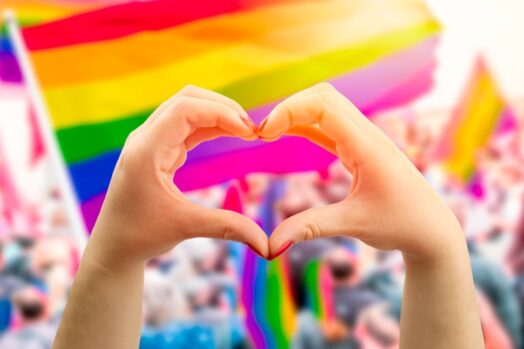
June is Pride Month in Canada and around the world. It is a time to celebrate the 2SLGBTQ+ community throughout the country and recognize the struggle they have endured to attain equality under the law and in society.
The History of Pride Celebrations in Canada
Pride celebrations started in Canada as a form of protest against discrimination. Women and Gender Equity Canada says the first demonstrations took place in Ottawa and Vancouver in 1971. By 1973, Pride events were held in several Canadian cities, including Montréal, Ottawa, Saskatoon, Toronto, Vancouver, and Winnipeg.
Pride Celebrations in Canada Today
Canada now celebrates 2SLGBTQ+ individuals throughout June in several ways. One is by flying a rainbow flag, often seen on homes and businesses as well as City Halls and schools. Toronto’s celebrations cumulate in one of the largest Pride parades in the world. This year it is being held on June 25 and will feature over 100+ groups marching. There are also parades, parties, concerts, and discussions throughout the month in cities all over Canada. These events have the full support of the federal government which recently committed $1.5 million to Pride organizations to ensure Pride events in Canada have adequate funding to hold all events as planned.
2SLGBTQ+ Immigrants in Canada
Canada was recently ranked as the safest travel destination in the world for 2SLGBTQ+ travellers and is a leading destination for 2SLGBTQ+ immigrants. This is in many ways due to its reputation for safety and tolerance. Discriminating against a person’s sexual orientation or gender identity is prohibited under the Canadian Human Rights Act and cannot be used to reject an immigration application. All 2SLGBTQ+ immigrants in Canada have the same rights and freedoms as a heterosexual or cisgender person on a similar visa or permit. Couples are entitled to all the same rights and benefits as opposite-sex partners or spouses.
Stats On 2SLGBTQ+ Immigrants In Canada
Statistics Canada data shows that as of 2018, more than half of gay or lesbian immigrants (55.0%) and nearly half of bisexual (49.6%) and heterosexual (45.8%) immigrants aged 25 to 64 had at least a bachelor’s degree. This is a higher percentage than that of Canadian-born people of the same sexual orientation. The same study also found that a larger proportion of gay or lesbian and bisexual individuals (6.3% and 5.0%, respectively) than heterosexual people (3.0%) spoke both of Canada’s official languages, English and French (or both languages and a non-official language) most often at home.
The Immigration Process For 2SLGBTQ+ Immigrants
The immigration process for anyone who identifies as 2SLGBTQ+ is no different than it is for anyone else. Immigration Refugees and Citizenship Canada (IRCC) says that when you immigrate to Canada, you will not be asked to disclose your sexual orientation or gender identity. When you apply to immigrate, you will be asked to mark ‘F’ for female, ‘M’ for male or ‘X’ for another gender.
Updating Gender Identity Information in Canada
If your gender identity changes or is different from what is on your application to IRCC (information on your application must match your passport, which you may not be able to change in your home country to reflect your identity) you can apply to have it changed on your permanent resident card, work or study visas or citizenship certificate. No supporting documents are required.
History of 2SLGBTQ+ Rights in Canada
The history of 2SLGBTQ+ rights in Canada hasn’t always been positive, especially regarding immigration. In 1953, the Immigration Act was amended to prohibit “homosexuals” from immigrating to Canada.
Homosexuality was decriminalized in Canada in 1969, with then Prime Minister Pierre Elliot Trudeau famously remarking that the “state has no place in the bedrooms of the nation.” Even so, it wasn’t until 1978 that “homosexual” immigrants were deemed admissible to Canada.
In 1995, same-sex couple adoptions were legalized in Ontario and other provinces quickly followed. The following year, sexual orientation was added to the Canadian Human Rights Act as an illegal reason for discrimination. In 1999, the Supreme Court ruled that in Ontario, same-sex couples should be entitled to equal benefits as married or common-law partners. The court said that defining a spouse as a partner of the opposite sex was unconstitutional.
Same-sex marriage became legal in Canada in 2005. It was the third country in the world to take this step after Belgium (2003) and the Netherlands (2000).
Bill C-279 was passed in 2013 and extended human rights protections to transgender and transsexual people in Canada, In 2017, gender identity and gender expression were added as protected grounds from discrimination under the Canadian Human Rights Act.
Celebrating Diversity in Canada
Canada is a diverse and welcoming country that celebrates its differences. During Pride Month and throughout the year, Canadians celebrate the contributions of 2SLGBTQ+ individuals and the important role they play in Canada’s history and culture.

Be the first to comment